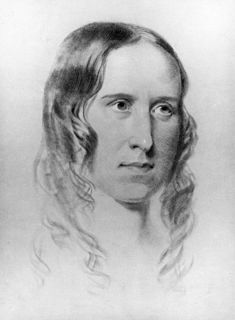Related Research Articles

John Brown was a Scottish personal attendant and favourite of Queen Victoria for many years after working as a gillie for Albert, Prince Consort. He was appreciated by many for his competence and companionship, and resented by others for his influence and informal manner. The exact nature of his relationship with Victoria was the subject of great speculation by contemporaries.
Archibald Douglas, 8th Earl of Angus and 5th Earl of Morton was the son of David, 7th Earl of Angus. He succeeded to the title and estates in 1558, being brought up by his uncle, James Douglas, 4th Earl of Morton, a Presbyterian. In 1573 he was made a Privy Councillor and Sheriff of Berwickshire; in 1574 Lieutenant-General in Scotland; in 1577 Warden of the West Marches and Steward of Fife; and in 1578 Lieutenant-General of the realm. As a supporter of Morton and "ultra-Protestant" policy he was twice forced in exile in England.

Martine Carol was a French film actress.
William Douglas, 6th Earl of Morton was the son of Robert Douglas of Lochleven and Margaret Erskine, a former mistress of James V of Scotland.

Ludovic Stewart, 2nd Duke of Lennox and 1st Duke of Richmond, Seigneur d'Aubigny in France, lord of the Manor of Cobham, Kent, was a Scottish nobleman who through their paternal lines was a second cousin of King James VI of Scotland and I of England. He was involved in the Plantation of Ulster in Ireland and the colonization of Maine in New England. Richmond's Island and Cape Richmond as well as Richmond, Maine, are named after him. His magnificent monument with effigies survives in Westminster Abbey.
William Armstrong of Kinmont or Kinmont Willie was a Scottish border reiver and outlaw active in the Anglo-Scottish Border country in the last decades of the 16th century.

Janet Stewart, Lady Fleming, called la Belle Écossaise, was a Scottish courtier. She was an illegitimate daughter of King James IV of Scotland who served as governess to her half-niece Mary, Queen of Scots. Janet was briefly a mistress of King Henry II of France, by whom she had a legitimated son: Henri d'Angoulême. Her daughter, Mary Fleming, was one of the young queen's "Four Marys".

Mary Anne Everett Green, née Wood was an English historian. After establishing a reputation for scholarship with two multi-volume books on royal ladies and noblewomen, she was invited to assist in preparing calendars (abstracts) of hitherto disorganised historical state papers. In this role of "calendars editor", she participated in the mid-19th-century initiative to establish a centralised national archive. She was one of the most respected female historians in Victorian Britain.

Elizabeth Melville, Lady Culross (c.1578–c.1640) was a Scottish poet.
ǀKaggen pronounced IPA: [ǀ͡Kaggen] is a demiurge and folk hero of the ǀXam people of southern Africa. He is a trickster god who can shape shift, usually taking the form of a praying mantis but also a bull eland, a louse, a snake, and a caterpillar.

Dame Florence Ann "Flora" Reid, was the wife of Sir George Reid, the fourth Prime Minister of Australia.

Sir James Reid, 1st Baronet was a British doctor who served as physician-in-ordinary to three British monarchs, Queen Victoria, King Edward VII and King George V.

Henrietta Antonia Clive, Countess of Powis, was a British writer, mineral collector, and botanist. Her time in India, while her husband was Governor of Madras, was inspirational to her for all three of these pursuits.

Katharine Pyle was an American artist, poet, and children's writer.
Annabel Davis-Goff is an Irish novelist, academic, screenwriter and advocate, active in the United States.
Sir Roger Aston of Cranford, Middlesex, was an English courtier and favourite of James VI of Scotland.
Penelope Valentine Hester Chetwode, Lady Betjeman was an English travel writer. She was the only daughter of Field Marshal Lord Chetwode, and the wife of poet laureate Sir John Betjeman. She was born at Aldershot and grew up in northern India, returning to the region in later life.
Doreen Ingrams was a British writer and colonial figure whose pioneering survey-work in South Arabia led to a memoir, A Time in Arabia (1970), and to "The Ingrams' Peace," a truce between warring tribes in the Hadhramaut in southern Arabia.

Marie Stewart, Countess of Mar (1576-1644) was a Scottish courtier. She was the daughter of Esmé Stewart, 1st Duke of Lennox, a favourite of James VI of Scotland, and Catherine de Balsac. After her marriage, as was customary in Scotland, she did not change her name, and signed her letters as "Marie Stuart".
George Young was a Scottish churchman, courtier, member of the Privy Council of Scotland, diplomat, and secretary depute.
References
- ↑ Eland books Archived 2006-10-14 at the Wayback Machine